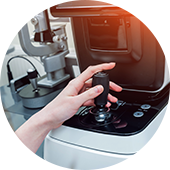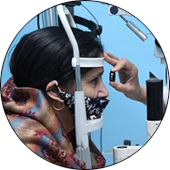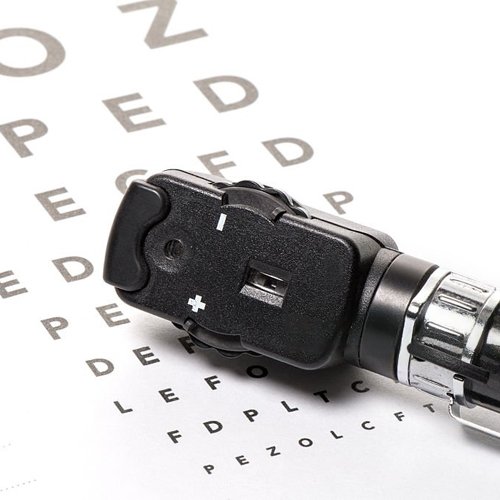- Email: Sushil_60@yahoo.com
- 4/15, sector -5, rajendra nagar
- Call: +91 98100 32030
Ophthalmoscopy

20
Years of Experience in This Field
The Great Place Of New Vision Eye and Medical Care. Best Eye Care Clinic in Ghaziabad.
"The Great Place Of New Vision Eye and Medical Care" is the premier Eye Care Clinic in Ghaziabad, dedicated to providing top-notch medical and eye care services to the community. Our mission is to offer comprehensive, compassionate, and state-of-the-art eye care to improve the vision and overall well-being of our patients.
Our Mission
- High-quality work
- Innovation and Research
- Rapid response times
Our Vision
- Best Price
- Best Treatment
- Emergency solutions
What is Ophthalmoscopy?
Ophthalmoscopy, also known as fundoscopy or retinal examination, is a medical procedure used by eye care professionals to examine the interior structures of the eye, specifically the retina, optic nerve, and blood vessels. This examination helps in diagnosing and monitoring various eye conditions and systemic diseases that can affect the eye.
During ophthalmoscopy, the healthcare provider uses an ophthalmoscope, which is a specialized handheld instrument that emits a beam of light into the eye. The ophthalmoscope has a small, magnifying lens and often allows the examiner to see the back of the eye in detail. There are two main types of ophthalmoscopy:
Trabeculectomy: This is one of the most traditional glaucoma surgeries and involves creating a small drainage channel to allow excess aqueous humor (the clear fluid in the eye) to exit the eye, thereby reducing intraocular pressure.
Direct Ophthalmoscopy: In direct ophthalmoscopy, the healthcare provider holds the ophthalmoscope close to the patient's eye and looks through the device to view the retina. This method is particularly useful for a quick and initial assessment of the eye's health.
Indirect Ophthalmoscopy: Indirect ophthalmoscopy involves the use of a larger, binocular indirect ophthalmoscope, which is worn on the examiner's head.

This method provides a wider field of view and allows for a more comprehensive examination of the retina and other structures at the back of the eye. It is often used for a more detailed examination and for assessing conditions like retinal tears, detachments, and more complex cases.
Ophthalmoscopy can help in the early detection and monitoring of various eye conditions and diseases, including diabetic retinopathy, age-related macular degeneration, glaucoma, hypertensive retinopathy, and many others. By examining the optic nerve and the blood vessels, ophthalmoscopy can provide valuable insights into a patient's overall health, as certain systemic conditions, such as hypertension and diabetes, can manifest with changes in the appearance of the retina.
Ophthalmoscopy is a routine part of a comprehensive eye examination and plays a crucial role in diagnosing and managing eye-related and systemic health issues. It should be performed by trained healthcare professionals, such as ophthalmologists and optometrists, who have the necessary skills and equipment to conduct the examination accurately.
A Global Leader, Treatment
of eye Disease

Heart Disease
Heart disease, also known as cardiovascular disease, refers to a group of conditions that affect the heart and blood vessels. It can encompass various disorders such as coronary artery disease, heart failure, arrhythmias, and valvular diseases.

Pediatric Ophthalmology
Pediatric ophthalmology is a medical specialty focused on the diagnosis and treatment of eye and vision problems in children, from infancy to adolescence.

Lenses Transitions
Transition lenses are a type of eyeglass lens that automatically adjusts their tint in response to changing light conditions. They darken when exposed to UV light and become clear indoors.
How it Helps You to
Keep Healthy

Get Appointment
+91 98100 32030

Start Check-Up
Begin Your Journey to Better Health Today: Start Your Check-Up!

Enjoy Healthy Life
Embrace Wellness: Enjoy a Healthier Life!
What are the advantages of ophthalmoscopy?
Ophthalmoscopy offers several advantages in the field of eye care and medicine:
Early Detection of Eye Diseases: Ophthalmoscopy allows for the early detection
of
various eye diseases and conditions, such as diabetic retinopathy, age-related macular
degeneration, glaucoma, and retinal detachment. Detecting these conditions in their early
stages can lead to more effective treatment and better outcomes.
Monitoring Eye Health: Ophthalmoscopy is used to monitor the progression of eye diseases and assess the effectiveness of treatment over time. This is important for managing chronic conditions and making necessary adjustments to the treatment plan.
Assessment of Systemic Health: Changes in the blood vessels and structures of the retina can be indicative of underlying systemic health conditions such as hypertension, diabetes, and cardiovascular diseases. Ophthalmoscopy can provide valuable insights into a patient's overall health.
Customized Treatment: Ophthalmoscopy helps eye care professionals tailor treatment plans to the specific needs of each patient. By visualizing the eye's interior structures, healthcare providers can make informed decisions about treatments such as laser therapy, medication, or surgery.

Comprehensive Eye Examination: Ophthalmoscopy is an integral part of a comprehensive eye examination, ensuring that eye care professionals thoroughly evaluate the health of the eye and detect any abnormalities or issues that may otherwise go unnoticed.
Patient Education: Ophthalmoscopy allows healthcare providers to show patients images of the back of their eyes, helping to educate and engage patients in discussions about their eye health. Visual aids can be powerful tools for patient understanding and compliance with treatment recommendations.
Research and Education: Ophthalmoscopy is a valuable tool for medical education and research. It enables medical students and researchers to study the anatomy and pathology of the eye, leading to advancements in the field of ophthalmology.
Emergency Care: In emergency situations, such as cases of acute retinal detachment or sudden vision loss, ophthalmoscopy can quickly assess the condition and guide immediate interventions to prevent permanent vision loss.
Long-term Care: For patients with chronic eye conditions, ophthalmoscopy is a critical tool for long-term management. Regular monitoring of the retina allows for the adjustment of treatment plans and the assessment of disease progression.
Preventative Care: Ophthalmoscopy can be used to identify risk factors and early signs of eye diseases, allowing for preventative measures to be taken. For example, identifying signs of diabetic retinopathy may lead to better blood sugar control to prevent further damage.

